To celebrate the centenary of the University of the Philippines (UP), the College of Arts and Letters at the Diliman Campus held the Komedya Fiesta 2008. For the whole month of February, the campus was dressed with traditional fiestas culminating with performances of komedya, a traditional Hispanic theatre form that has been Filipinized.
Conceived in 2002 by Virgilio S. Almario, then dean of the UP College of Arts and Letters and a National Artist for Literature, the festival was envisioned to underscore komedya’s viability of becoming a national theatre as suggested by Almario through komedya specialists Nicanor Tiongson and Doreen Fernandez. In 2007, the festival was finally formalized with the intentions of historicizing the present state of komedya, evaluating the traditional practices of komedya troupes, and mounting traditional komedya performances in a metropolitan area (Metro Manila). National Artist Almario tapped me to assist in the festival as part of the core team. This was my initiation to festival management as then a new faculty member of the Department of Speech Communication and Theatre Arts.
Introduced by the Spaniards during evangelization and hispanization, komedya is a colorful theatrical tradition whose plots revolve around the social, political, and religious conflicts between the Muslims and Christian (specifically, Catholic) heroes as suggested by Tiongson in Komedya (the University of the Philippines Press, 1999) and Fernandez in her opus Palabas (Ateneo de Manila University Press, 1996). It is usually presented in religious fiestas with the support and patronage of the Catholic community members. The souvenir program of the 2008 festival mentions that komedya is one of the traditional theatre genres that is fully developed and which dominated the Philippine theatre for over 300 years truly deserves an examination. It is significant to note that after substantial studies conducted in 1980s by local scholars and some komedya groups, it was recommended this theatre form be institutionalized as a national theatre, but nothing followed until this first national komedya festival was initiated in 2008.
Funded by the National Commission for Culture and the Arts (NCCA), Senator Edgardo Angara, the municipality of Quezon City, the UP Office of Initiatives in Culture and the Arts (OICA), the UP Office of the President, and the UP Diliman Office of the Chancellor, the festival not only focused on the performances of traditional komedya but also featured a conference, a workshop, an exhibition, and a colloquium.
The festival opened on 1 February with a parade billed as Tahak (Explore). Excerpts from a komedya were also mounted around the university oval. Tahak had three major stations where UP officials (and the sponsors of the festival) officially welcomed the participating groups from northern Luzon, the National Capital Region, Visayas, and Mindanao.
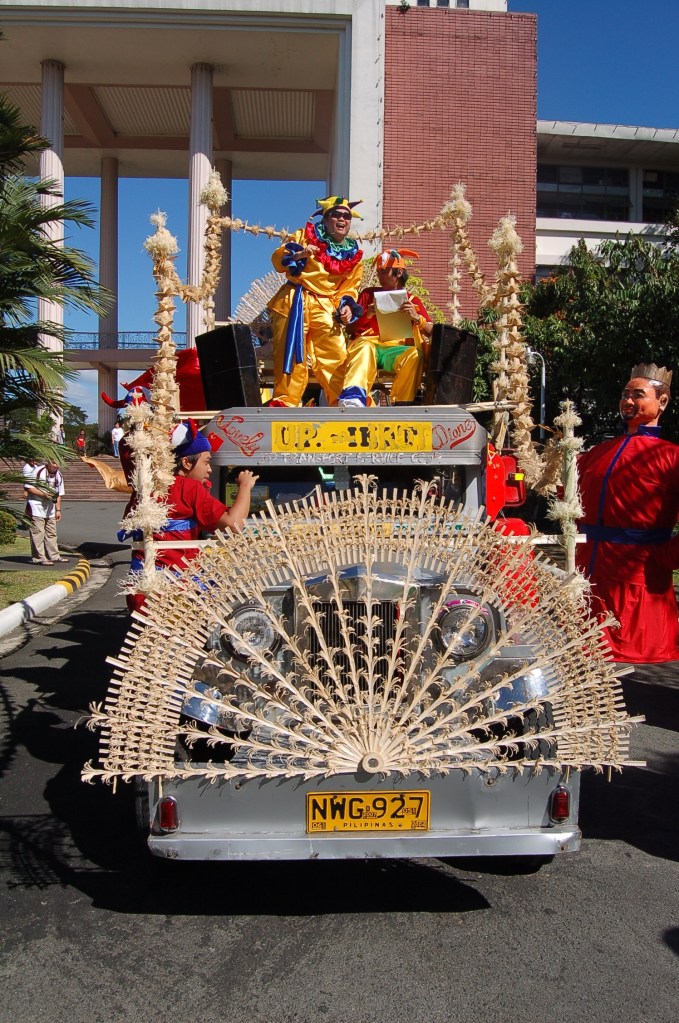
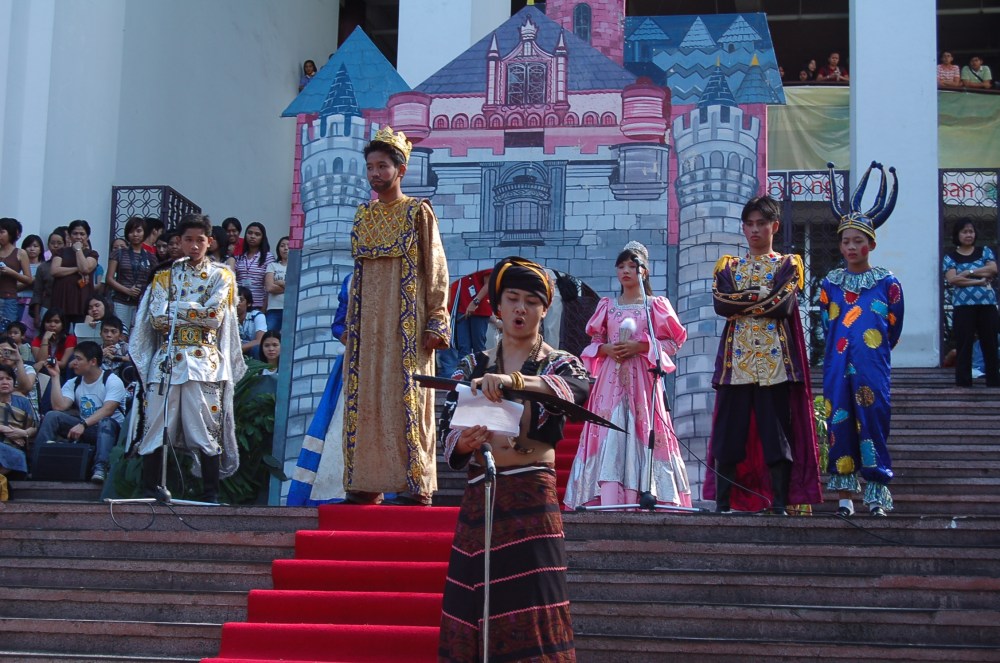
The stations were designed according to three of the most important scenes in a komedya: kaharian (kingdom/court) was the first station (Palma Hall); hardin (garden) was the second station (Malcolm Hall); and kagubatan (woods/forest) was the third station (Melchor Hall). The five participating komedya troupes (Komedya ng Don Galo, Hiraya Theatre Company, Komedya ng San Dionisio, Comedia de Baler, Komedya San Miguel, and Dulaang UP) were introduced in the respective stations. Emerlinda R. Roman, president of the UP System, and Sergio S. Cao, chancellor of UP Diliman, assumed the roles of the hermano and the hermana (sponsors of a komedya performance) as they formally welcomed the troupes. As symbols of enthusiastic participation in the festival, the troupes offered the most important motifs in a komedya performance—daga (shield), espada (sword), sombrero (clown’s hat), korona (crown), and setro (scepter)—to President Roman and Chancellor Cao.
The centerpiece of this fiesta was komedya performances staged every Friday of February at the University Amphitheatre. Two among the three types of komedya were performed in the festival: comedia de capa y espada (komedya about warring kingdoms, popularly known as moro-moro) and comedia de santo (lives of saints or, more often in the Philippines, Bible stories to promote evangelization). Komedya ng San Dionisio and Komedya ng Don Galo (both from Paranaque City), Comedia de Baler (from Baler, Aurora, in northern Luzon), Hiraya Theatre Company, and Dulaang UP presented the moro-moro. Komedya San Miguel showed an evangelical komedya.
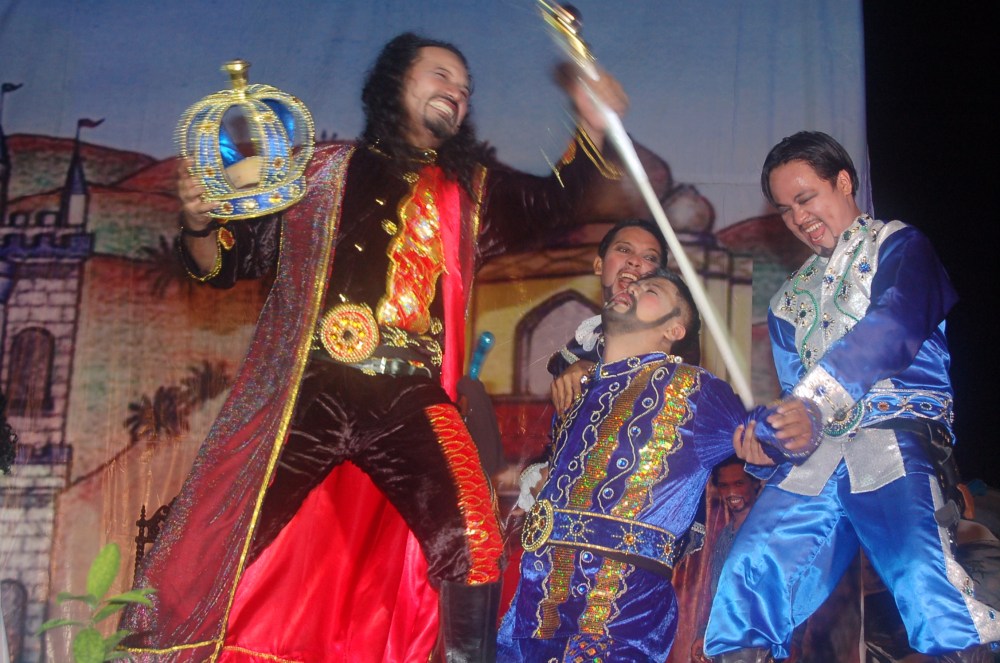



Komedya ng San Dionisio’s performance of Max Allanigue’s Prinsipe Rodante (Prince Rodante) opened the festival. Highly trained komedya actors, an elaborate backdrop of a European medieval castle, and well choreographed marcha (entrances and exits) and batalya (war dance) mesmerized the audience, who stayed for more than two hours to enjoy this “traditional” komedya performance.
The next Friday, Komedya San Miguel presented Kinabuhi ni San Miguel (Life of St. Michael). The orihinal (the text of komedya) was a mixture of prose and awit. The performance drew admiration through the group’s ingenious spectacle (i.e., the giant six-headed serpent with flaming mouth). Iligan City mayor Lawrence Ll. Cruz and his wife, Gina Sue Hilda Cruz acted as the troupe’s production managers.
On the third Friday, the Visayan representative, Hiraya TheatreCompany, performed Exaltacion V. Combong’s Kasanag Batok sa Sugal (Light versus Gambling). This komedya veered away from the theme of Christian versus Muslim. The play revolved around the story of a community addicted to gambling.
On 22 February, Komedya ng Don Galo, a komedya troupe of child performers, presented Prinsipe Rodante. Because of rain the performance moved from the University Amphitheatre to the 2,500-seat University Theatre.
Finally, Comedia de Baler closed the festival with Sakim na Pagmamahal (Selfish Love), which used real swords. Two nurses were stationed off stage and ministered to three actors who had minor injuries on stage.

On 28 February, Dulaang UP’s rendition of Francisco Baltazar’s Orosman at Zafi ra (a new adaptation by myself, with original music by Carol Bello, choreographed and directed by Dexter Santos) was performed exclusively for the participants of the conference and the colloquium. The performance, as noted in the play’s souvenir program (Tiatco, Sabatte, and Valera 2008: 8) negotiated traditional tenets of komedya and modern theatre techniques to create an “alternative performance of komedya, which is neither a traditional nor contemporized komedya” (8). We derived inspiration from traditional komedya but adapted freely.
The music of a traditional komedya is performed by a brass band, but in Orosman at Zafi ra the music was played on indigenous instruments such as djembe drum, kulintang (gong chime), kubing ( jaw harp), rain maker, and so on, and present day keyboard, electric guitar, and drum set.
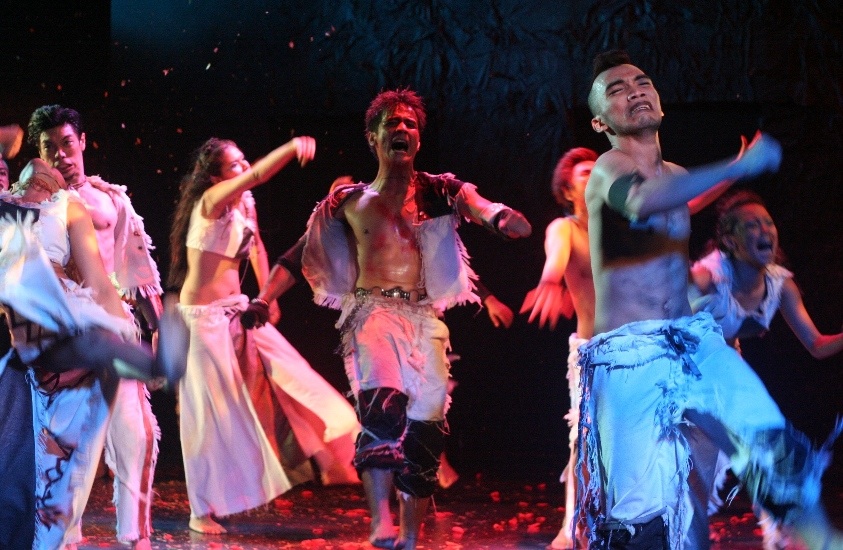
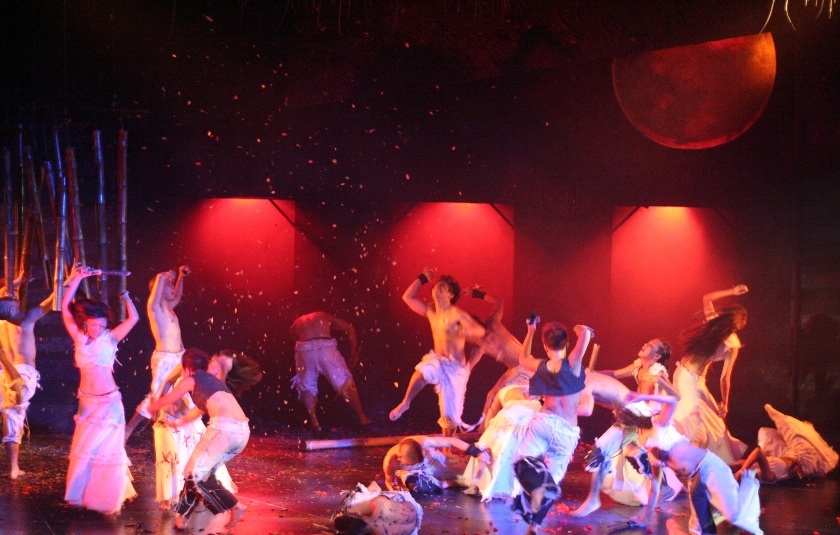
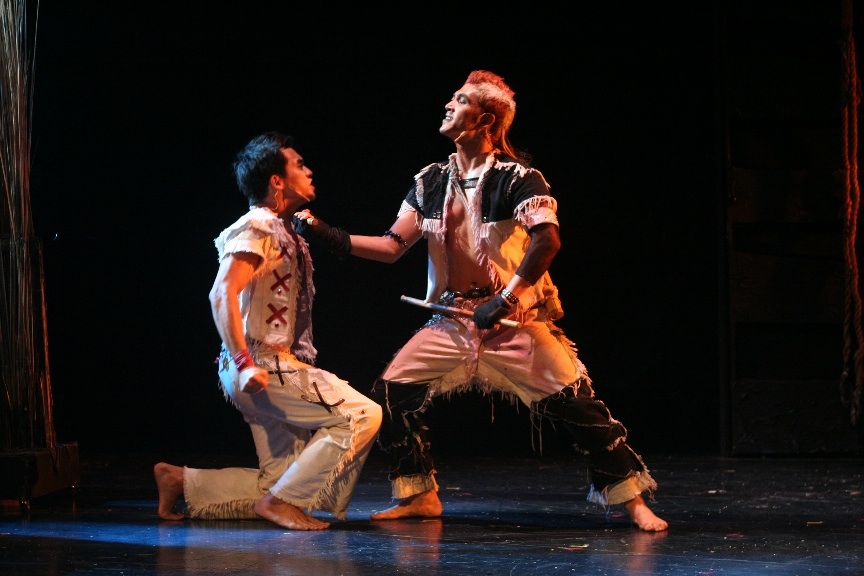
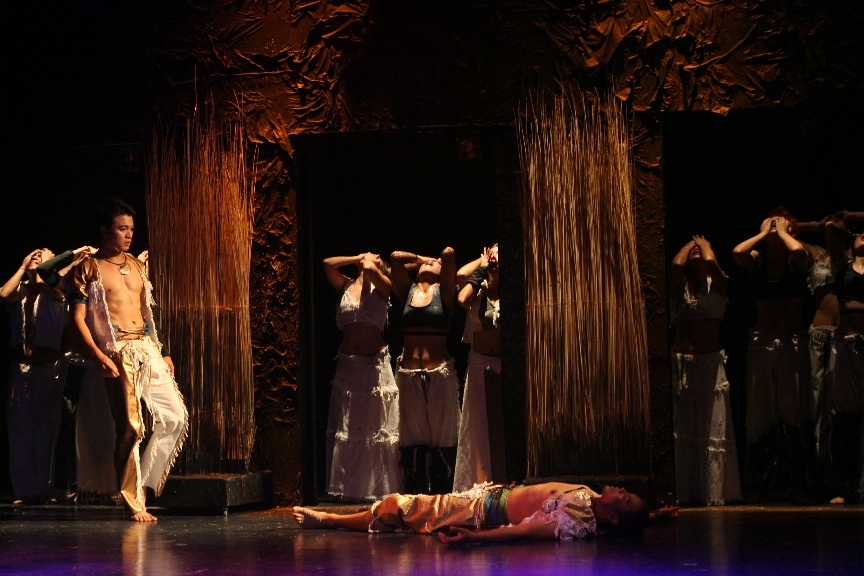
In this performance the komedya literally became a musical. From the traditional conventions of marcha, batalya, and punebra (funeral march), the new production used movements inspired by Philippine rituals of the Ifugaos in northern Luzon, Manobo in the Mindano, and Palawenos in the Palawan Islands. The conventions of loa (narrator) and lukayo (clown) were dissolved, and narration was instead delivered by Zelima, a liminal character we dramaturges invented. Finally, in the traditional komedya, the Christians and the Moros have distinct marches that distinguish one from the other as they enter and exit the stage, but in this rendition, the group amalgamated the ritualistic movements of the Filipino people in northern Luzon, Palawan, Bicol, and Mindanao and assigned specific devised movements to each tribe. Our intent in these changes was to strip off the European motifs of the original text and to revitalize the komedya conventions into more contemporized theatre techniques.
Balitaktakang Komedya (Conference on Komedya), Palihan (Work shop), and Usapang Komedya (Colloquium on Komedya) were held 27–29 February 2008 at the National Engineering Center (NEC). The secretariat received twenty-six abstracts (local and international), of which nineteen were accepted. The event drew 110 participants from all over the Philippines. Papers addressed representations of the Muslims and the Christians, actor trainings in different komedya organizations, humor and wit in komedya, comparison of komedya to foreign texts (e.g., Shakespeare), and other topics.
Three keynotes were given. Nicanor Tiongson, former dean of the UP College of Mass Communication, reiterated the need for the establishment of komedya as a national theatre. In his speech, he paralleled komedya with the traditions of kabuki and nö within Japan. Filipino anthropologist Resil Mojares focused on the politics of komedya in Cebu, where it is called linambay. Gabino Ponce Herrerro, professor of human geography from the Universidad de Alicante in Spain discussed the representations of the Christian and the Muslims in the Spanish comedia, from which the Philippine komedya is derived.
The workshops featured local experts on the different elements of a komedya performance. Five parallel workshop modules were facilitated by invited komedya practitioners. The first module concentrated on the diccio, or the distinct manner of delivering komedya verses, and was facilitated by Jaime Nery and Hermie Hernandez of Komedya ng San Dionisio. The module on komedya movement conventions (marcha and batalya) was facilitated by Grace Jeramillo and Monique Macatuggal of Komedya ng Don Galo. Betty Conde, a komedya writer from Cavinti, Laguna, shared her expertise in writing an orihinal text. Trinidad Juanillo, also from Cavinti, shared the important role of the apuntador (stage prompter-manager). Finally, to promote an understanding of the distinct organizational, artistic, and performance practices of the troupes, Bahaginang Komedya (Sharing of Komedya Praxis) was given by selected members of some komedya troupes in the country (Joseph Mabalay from Nueva Ecija, Marilu Macatugal from Paranaque City, Neme Pagtakhan also from Paranaque City, Steve Fernandez from Iligan City, and Alex delos Santos from Antique).
The colloquium gathered komedya practitioners together with local scholars such as Amparo Umali III (an expert in cross-cultural studies on Japanese and Philippine theatre), Nicanor Tiongson, Belen Calingacion (a speech communication professor and expert in the performance of oral narratives in the Philippines), and Apolonio Chua (an expert in Philippine traditional theatre and street theatre). Around sixty komedya practitioners from all over the Philippines shared their experiences in “struggling” community theatre groups in their respective provinces and localities. The colloquium affirmed the desire of most komedyantes (komedya performers) to make the komedya a national theatre, and Amparo Umali III shared why komedya should be so proclaimed, pointing to similarities to Japanese affi rmations of kabuki and nö.
The fiesta also had supplementary events: the festival exhibit, paseo at serenata ng banda (parade and the band serenade), palaro at palabas (traditional games and other theatrical activities), and pista ng bayan (a trade fair of the different Filipino folk art). The exhibit was a tribute to Francisco Baltazar (1788–1862), the well-known Tagalog komedyante whose masterpiece Florante at Laura (1838) is a required reading in high schools. The exhibit featured twenty visual artists who interpreted lines from Virgilio S. Almario’s new annotated version of Francisco Baltazar’s Florante at Laura (2008). Headed by Susan A. de Guzman and Giselle P. Kasilag, the exhibit opened on 8 February with excerpts from Florante at Laura performed by theatre arts students of UP under my direction.
Paseo at Serenata ng Banda featured brass bands from Taguig City, Quezon City, Manila, Antipolo City, Santa Maria in Bulacan, and the University of the Philippines. These bands marched around the university oval at 2 pm every Friday. At 5 pm, an assigned band would play in front of the amphitheatre to announce the komedya performance.
Palaro (games) and palabas (performances) were mounted at the university lagoon and segued to the komedya performances. The palaro became an educational medium at the same time enjoyment to the participants, most of which were children from the nearby communities and schools. Palabas on the other hand featured puppet shows (performed by Teatrong Mulat ng Pilipinas, one of the most celebrated puppet theatre in the Philippines), storytelling (facilitated by Alitaptap Storytellers Philippines, a guild of volunteers promoting child literacy), and short excerpts from the komedya troupes. Finally, Pista ng Bayan, the craft fair, was mounted on 29 February at the amphitheatre. This activity highlighted traditional products of the Tagalog region such as singkaban (bamboo arches), ukit papel (intricately cut paper used as traditional candy wrappers), puni (woven design), taka (papier mache), kayas (wood whittling), and kiping (rice wafers).
The festival closed on 28 February with the performance of Comedia de Baler’s Sakim na Pagmamahal. Prior to this performance, there was a ceremonial walk billed as “Walk for the Future” led by Chancellor Cao, Dean Almario, and other UP officials, followed by representatives of the komedya troupes.
This walk, according to Almario (in Lopez 2008b), acted as a form of thanksgiving and hope for the greater possibilities of the komedya as a national theatre in the future. The participation of Senator Edgardo Angara, together with Hermie Hernandez (Father of Komedya in Parañaque,), Betty Conde (the oldest komedyante participant in the festival) and Rhegille Gabriel Rodriguez (the youngest komedyante at nine years old) made this ceremonial walk more signifi cant. Senator Angara was honored as grand hermano in a simple rite. After the performance of Comedia de Baler, there was a grand fi reworks display. A closing dinner with a very simple program was hosted by the OICA at the University theatre lobby. Here Virgilio Almario called for komedya‘s recognition as a national theatre to be supported by the government, particularly the National Commission for Culture and the Arts (NCCA).
This essay originally came out in my Multiply account. Then, the Asian Theatre Journal (University of Hawai’i Press) published it as a report. The selection above is the first part of the essay in the Asian Theatre Journal. The second part is a preliminary discourse on the komedya as a proposed national theatre form. To access the entire essay, please click here.
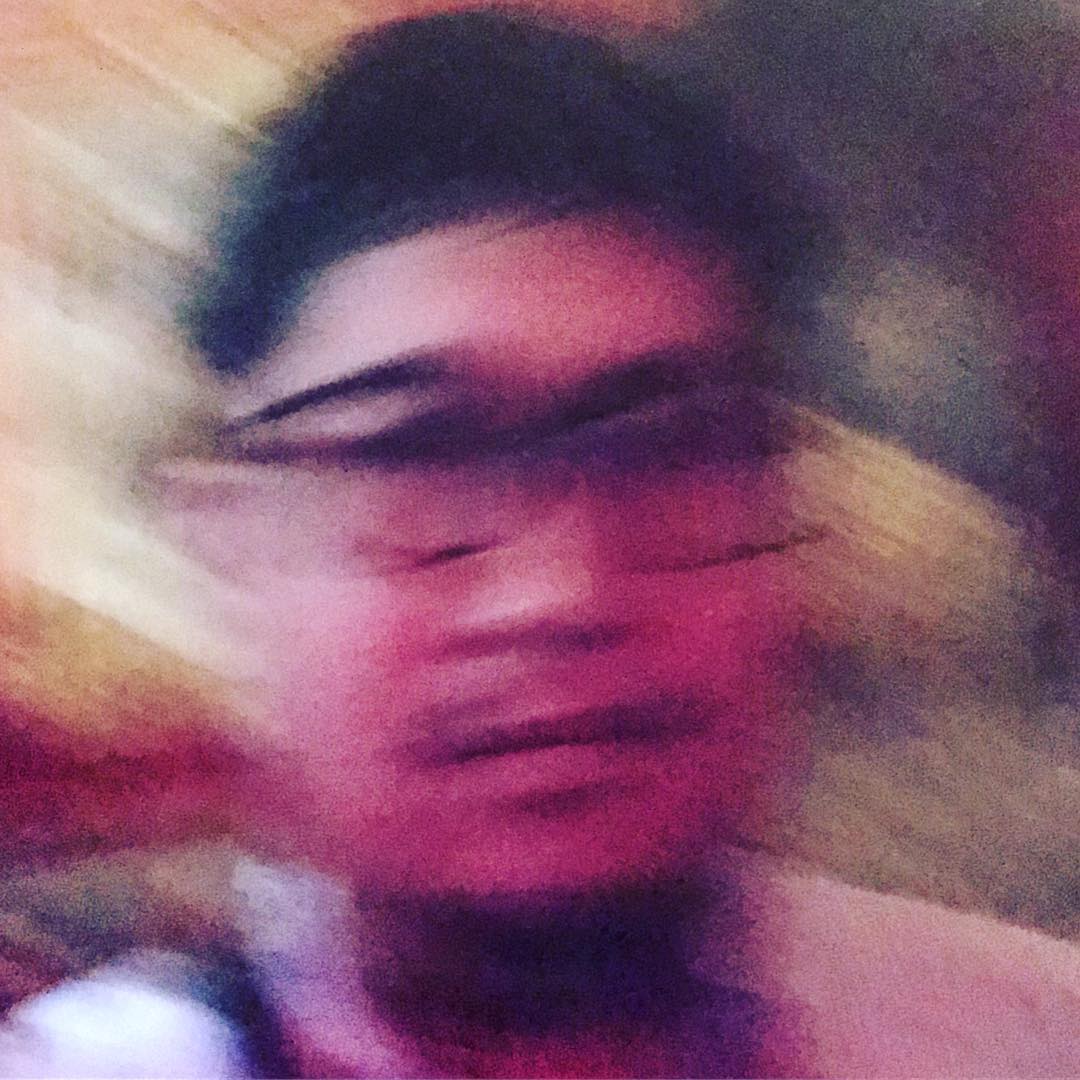
One Comment Add yours